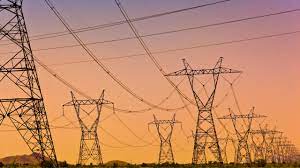
The headline figures from TasNetworks’ 2024-25 results are concerning enough. Profits continued on their downward trajectory and other targets were missed across the board. The net profit before tax of $12 million would have been reduced to a few shekels but for $8.5 million received in over recovery of regulated revenue which will have to be handed back to customers in future years via reduced charges. But beneath these immediate challenges lies a more fundamental question about the long-term sustainability of Tasmania’s electricity network provider.
When the Balance Sheet May Not Reveal the Reality
TasNetworks’ balance sheet shows net assets of $1.5 billion. This appears healthy. The company holds $4.4 billion in infrastructure assets, primarily the transmission and distribution networks that distribute power around Tasmania. But this strength is largely illusory.
The asset values reflect accounting revaluations not the company’s capacity to generate the cash needed for actual replacement. During 2024/25, TasNetworks recorded a $66 million increase in its asset revaluation reserve, which boosted equity on paper while the business struggled to generate sufficient operating cash flow. This is the financial equivalent of feeling wealthy because your house has increased in value, while your bank account drains and you can’t afford the repairs.
The harsh reality is this – Operating cash flow of $209 million minus capital expenditure of $269 million equals negative $60 million in free cash flow. TasNetworks is not self-funding its operations. Every year, the gap must be filled by borrowing more or seeking government equity injections.
The Depreciation Trap
The most insidious structural problem facing TasNetworks is the depreciation funding gap.
In theory, regulated utilities like TasNetworks charge depreciation to customers through their network charges. This creates a “sinking fund” to replace assets as they wear out. The Australian Energy Regulator determines allowed revenue including depreciation based on the Regulatory Asset Base.
But theory and practice diverge dramatically. TasNetworks charged $180 million in depreciation during 2024/25 based on revalued asset costs. However, this depreciation doesn’t translate to equivalent cash available for replacement because of:
- A timing mismatch, whereby depreciation is collected over 40-50 years, but replacement costs must be paid upfront when assets fail
- An inflation reality, whereby an asset, even if revalued, will cost more to replace
- Technology demandsthat mean modern replacements must meet higher standards (climate resilience, smart grid capability) than the assets they replace
The numbers don’t lie. Annual depreciation of $180 million on property plant and equipment assets should theoretically fund an annual capital program of similar size. Instead, TasNetworks spent $246 million on new assets, an $66 million annual funding gap that must be borrowed or extracted from government.
Over time, this compounds. A $4.2 billion asset base with a 40-year average life needs $105 million in annual like-for-like replacement. But accounting for inflation and improved standards, the true need is likely $200-300 million annually. Even TasNetworks’ current $246 million spending may prove insufficient, setting the stage for future reliability crises or explosive catch-up capital requirements.
The NWTD Reality Check
The North West Transmission Developments project provides a revealing case study in TasNetworks’ funding crisis.
This $950 million transmission upgrade, required to support the Marinus Link interconnector, was originally a TasNetworks project. But analysis revealed that TasNetworks couldn’t carry it commercially. According to reports, the company faced projected losses of $93 million over the first five years and a further $205 million through to 2050, even with concessional financing from the Clean Energy Finance Corporation.
The solution? A $346 million federal grant to directly reduce the regulatory asset base, plus ongoing concessional financing. Even with these extraordinary measures, NWTD “won’t pay its way for a long time” and will require additional borrowing.
Large projects with a long lead time before they become income producing always need careful management, a task made even harder when free cash is scarce and existing borrowings already high. Just ask the Board of TTLine.
If TasNetworks cannot fund a federally-approved, strategically-critical transmission project within the normal regulatory framework, how can it possibly fund the routine replacement of its entire $4.2 billion network over coming decades?TasNetworks received $90.7 million in equity contributions during FY25, with more coming in FY26 to total over $103 million. This is officially “compensation” for losses on the Marinus Link project before the company sold its stake.
But questions linger. The prior year’s accounts showed only a $70 million discontinued operations loss from Marinus Link. Receiving $103 million in compensation for a $70 million accounting loss is puzzling. Moreover, much of TasNetworks’ Marinus spending was funded by Commonwealth grants, raising questions about whether the company was genuinely out-of-pocket. Commonwealth grants were quarantined for Grants Commission purposes. Tasmania’s GST share was unaffected. This effectively meant the grants were gifts.
The timing is also instructive. These equity injections arrive precisely when TasNetworks is recording its worst financial performance in a decade. Are these genuinely compensating past losses, or are they quietly supporting operational deficits?
If government must provide equity every time a strategic project doesn’t proceed as planned, is TasNetworks truly operating on a commercial basis? Or has it become a quasi-government department that cannot function without regular taxpayer capital injections?
The Collapse in Government Returns
Perhaps the starkest indicator of financial deterioration is the trajectory of returns to the Tasmanian Government, TasNetworks’ sole shareholder.
Ten years ago, TasNetworks delivered approximately $130 million annually to government coffers through income tax equivalents, dividends, and guarantee fees. In 2024/25, that figure has collapsed to just $27 million (including $11.5 million in guarantee fees, which are really a cost).
Stripping out guarantee fees, the effective return to government was only $15 million—an 88% decline over a decade.
The Price-Taker Constraint
TasNetworks operates in a fully regulated environment where the Australian Energy Regulator determines allowed revenue every five years. In theory, this provides certainty and removes market risk. In practice, it creates a straightjacket.
When costs spike unexpectedly, whether from extreme weather events, enterprise agreement wage increases (up 15% in 2024/25), or interest rate rises (finance costs up 19%),TasNetworks cannot simply pass these through to customers. It must apply to the AER for adjustments, provide evidence, and wait for determinations. Meanwhile, it must either absorb losses, cut costs that risk service quality, or defer capital expenditure that creates future risks.
The August 2024 storms cost $9.4 million in operating expenditure alone. These “major event days” are becoming more frequent, but the regulatory model assumes historical averages. The climate is changing faster than the regulatory framework can adapt.
Is the Model Broken?
When a government-owned, regulated monopoly infrastructure business requires equity injections to remain viable, something is fundamentally wrong. The evidence suggests TasNetworks’ business model is broken:
The symptoms are unmistakable:
- Negative free cash flow requiring borrowing or equity to fund operations
- Returns to government down 88% over a decade
- Major projects (NWTD) impossible to fund without extraordinary federal support
- Operating cash insufficient for asset replacement needs
- Balance sheet strength that masks cash generation failure
If TasNetworks cannot deliver commercial returns under current settings, what is it?
Is it a commercial business that has failed? Is it a public service that should be funded from general taxation? Is it a regulated utility where allowed revenues are systematically too low? Or is it an asset stranded in a regulatory framework designed for stable conditions that no longer exist?
The answer matters enormously. Regulated competition was introduced into the electricity transmission and distribution industry to allow governments to sell off their publicly owned assets. Whether that was a sound idea is a topic for another day. Tasmania chose not to go down that path. If TasNetworks is effectively a failed commercial enterprise, perhaps it should be restructured or wound down. If it’s a public service, fund it honestly from the budget rather than through opaque regulatory charges. If the regulatory framework is inadequate, fix it,even if that means higher electricity bills that are transparent whereby government can provide financial support for those members of our community who are most vulnerable.
What Tasmania cannot afford is the current fiction, pretending TasNetworks is a commercial business delivering commercial returns while it demonstrably isn’t.
The $103 million equity injection for Marinus may prove just the first of many. Without fundamental reform, whether through radically lower costs, substantially higher regulated revenues, or honest acceptance of ongoing government subsidies, TasNetworks risks becoming a slowly-degrading asset consuming increasing taxpayer support while delivering declining service.
That’s lose-lose for everyone: government loses commercial returns, customers experience declining reliability, and taxpayers fund growing implicit subsidies.
The question Tasmania must answer is this – how should essential electricity infrastructure be funded when the current model demonstrably doesn’t work? Until that question is honestly addressed, TasNetworks’ financial crisis will deepen, regardless of whether the next year brings storms, strikes, or sunshine.
The time for comfortable fictions is over. Tasmania needs an honest conversation about the true cost of maintaining electricity infrastructure in an era of climate extremes, technology transition, and constrained public finances. The 2024/25 disappointing results aren’t just a bad year, they’re a symptom of a broken model that requires urgent, fundamental reform.

